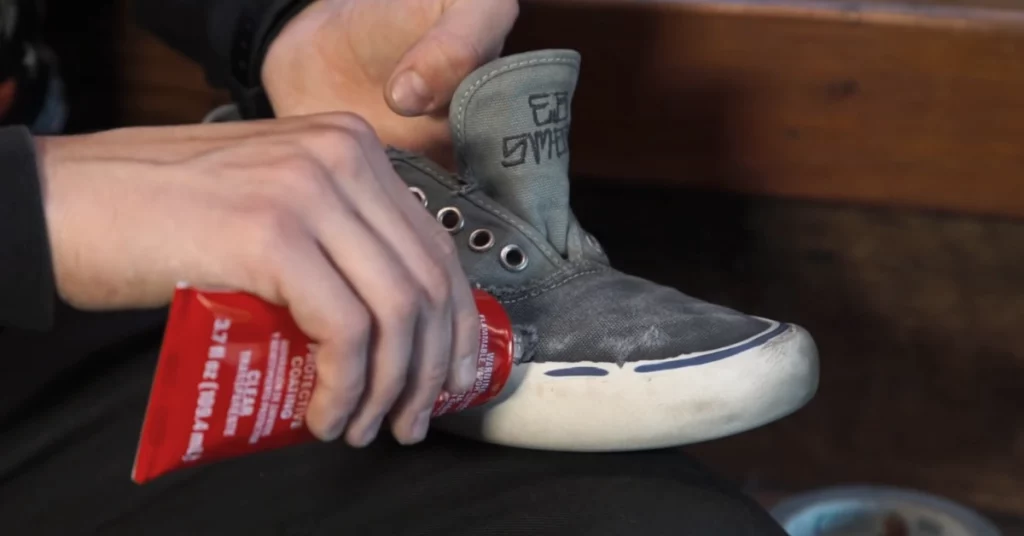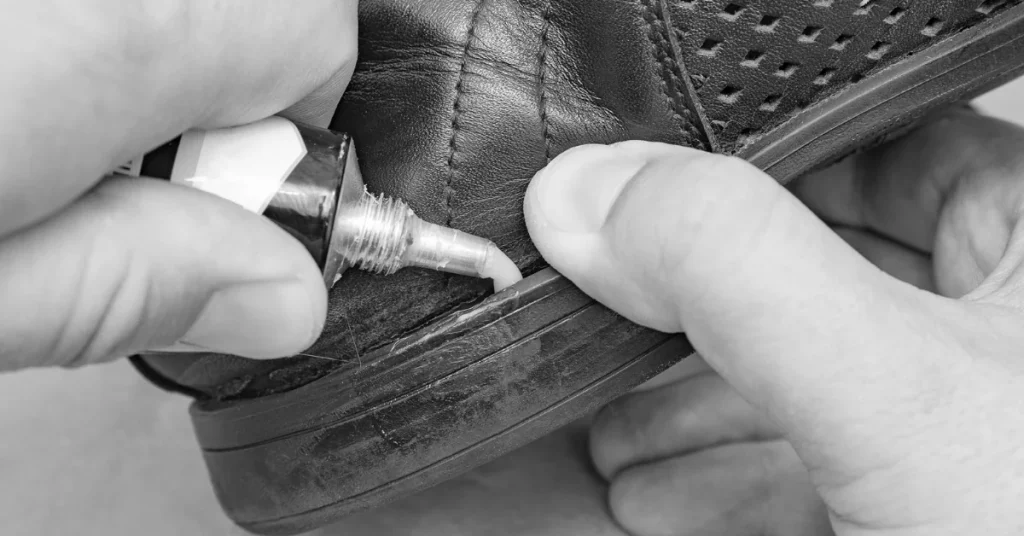If you’re looking into repairing your old, worn-out shoes, one of the major components you’ll need is a shoe glue that fits your purpose. Shoe Goo is one of the most popular and cheaper options for repairing shoes. On the other hand, Rubber cement is also a viable and available alternative for improving your boots.
If you’re stuck between the debate of Shoe Goo vs. Rubber Cement, keep reading, we’ll go over their features and more below.
Read More: E6000 vs. Shoe Goo
What is Shoe Goo?
Shoe Goo is an adhesive made for repairing different shoe components by Eclectic Products, originating from Oregon. Shoe Goo is one of the most popular, widely available, and relatively cheap adhesives available in the market.
Shoe Goo is an ideal sealant and adhesive composed of Styrene-butadiene, Toluene, and Solvent naphtha. This chemical combination acts as a cleaning/degreasing solvent and synthetic abrasion-resistant rubber, which is good in the long term once the shoe is repaired.
Shoe Goo is suitable for various materials, and you can use them for shoes purchased for sports and recreational purposes. Furthermore, Shoe goo is water-resistant, making it ideal for many more situations. Shoe goo is also suitable for repairing multiple components of shoes like the heel or waders.

What is Rubber Cement?
Rubber Cement is an adhesive that falls into the category of drying glue since the solvent it is composed of evaporates quickly and creates a bond through the rubber solidifying.
Rubber Cement is primarily used for arts and crafts projects since it is easy to use and can be used by beginners trying it out for the first time without much difficulty. Furthermore, Rubber Cement is flexible and easy to remove, so fixing errors is relatively easy.
That being said, Rubber Cement can also be used to repair various parts of shoes like heels. Since rubber cement is flexible, you can create repositionable bonds, making it an ideal choice for DIY shoe repair.
Rubber Cement is usually composed of elastic polymers and a solvent comprising either acetone, hexane, toluene, or heptane for the fluidity of the glue.
Read More: Best Rubber Cement
Read More: Loctite Shoe Glue vs. Shoe Goo

Read More: Shoe Goo vs. Contact Cement
Shoe Goo vs. Rubber Cement – The Differences
So now that we’ve looked into the features and properties of Shoe Goo and Rubber cement , let’s take a look at their differences –
Appropriate Materials to Use on
Shoe Goo is a particular type of rubber cement explicitly made for shoes, so they work well with various materials. Shoe goo is an excellent choice for repairing shoes made with leather or canvas. Furthermore, they also work well with vinyl.
On the other hand, Rubber Cement is primarily used for arts and crafts. Rubber Cement is suitable for various materials like – rubber, leather, glass, or ceramic.
Drying Time
Shoe Goo usually takes a few hours to dry off completely. Furthermore, we suggest keeping your shoes unbothered for a day or two for the bond to be rigid and long-lasting.
Rubber Cement dries within minutes, depending on the thickness of the rubber cement you use. Typically, it takes around 5 minutes for rubber cement to dry off. Depending on the thickness of the layer, it might take about 15 minutes to dry.
Hazard
Shoe Goo is beginner-friendly, not flammable, and has no extra hazards.
On the other hand, even though Rubber Cement is beginner-friendly, it also comes with a fire hazard since it is flammable. While Rubber cement is typically safe, breathing in its fumes is hazardous to your health, so some caution is necessary.
Read More: Barge Cement vs. Shoe Goo
Last Opinion
Now that you know the differences and features of the glues, which one should you go for while choosing between Shoe Goo vs. Rubber Cement?
Ideally, Shoe Goo is the go-to choice for repairing shoes since it is made specifically for shoes and works well with various materials, and does not have the health and safety hazard Rubber Cement has.
However, Shoe goo has a longer drying time compared to Rubber Cement. So, if you’re in a rush, Rubber Cement might be your better option.

